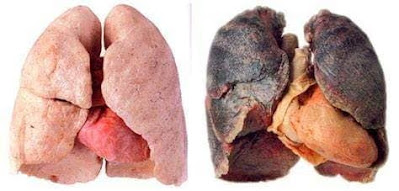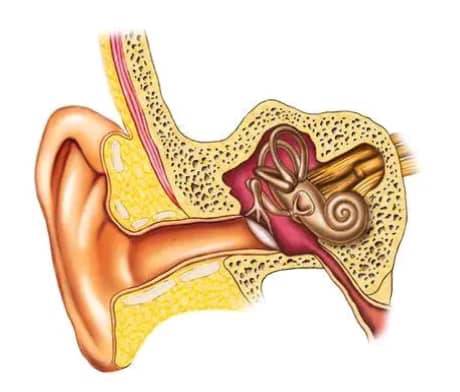Respiratory Disorders
Many diseases of the respiratory system affect people. The rate of these diseases is
particularly high in Pakistan. The reason for this is not only in the urban but also in the rural
atmosphere due to the high amount of air pollutants (pollutants).
Inflammation in the bronchi or bronchioles is called bursitis. In this inflammation, a lot of
mucus secretions are released inside the pimple, which causes inflammation in the walls of
the pimple and the pimple gets narrowed from the inside. It is caused by viruses, bacteria, or
chemicals that cause inflammation (eg tobacco smoke).
The two main types of bronchitis are acute and chronic - acute bronchitis usually lasts for
about two weeks and the patient recovers without permanent damage to the bronchi or
airways. In chronic bronchitis, the bronchi become chronically inflamed (lasting up to six
years). This paroxysm usually lasts from three months to two years.
Bronchitis symptoms include cough, wheezing, fever, chills, and shortness of breath
(shortness), especially when working hard.
2. Emphysema
The surface area of the immune system decreases. The alveolus breaks into the alveolar
wall at the same. This makes the amino-Oli's sexes bigger, but they are the ones that
exchange gases
resection. In this way, the air is outside and gets stuck inside the lungs. Symptoms of
Elise includes shortness of breath, fatigue, and recurrent episodes
Respiratory infection and weight reduction. By the time anti-sema symptoms begin to
appear, patients typically have 70% to 50% in their lungs. It has been developed. Oxygen
saturation in the blood can cause major complications.
3. Pneumonia
Pneumonia is an infection in the lungs. If Pneumonia affects the our both lungs then this type of pneumonia is called double pneumonia. The most common cause of this infection is a bacterium called Streptococcus pneumonia. Some viral infections (such as those caused by
the influenza virus) and fungal infections can also result in pneumonia.
When the organisms responsible for pneumonia enter the aloe vera, they reproduce and
multiply. They break down the lung tissue and the area fills with fluid and pus. The symptoms of pneumonia are chills followed by high fever, chills, and runny nose. The patient may have respiratory problems. The color of the skin may be black or purple. This is due to less oxygen in the blood happens.
Vaccines are available to prevent pneumonia caused by C. echinococcus pneumonia.
Antibiotics are used to treat such pneumonia.
4. Asthma
Sneezing is a type of allergy, in which the bronchi become inflamed, more mucus is
produced and the airways become blocked. In asthmatic patients, the bronchi and
bronchioles become sensitive to various factors (allergens) such as smoke, fragrance, pollen, etc. When exposed to such an allergen, the sensitized airways are immediate and abnormal
Romulus show and contract. This patient has difficulty in breathing. Asthma symptoms vary
from person to person. The main symptoms are shortness of breath (especially on exertion
and at night), wheezing (whistling when exhaling), cough, and chest tightness. Asthma is
treated with chemicals that have the ability to open the bronchi and bronchioles. some
medicine is available in inhaler form.
5. Lung Cancer
Lung cancer refers to the uncontrolled division of lung growths in which the
cells continue to divide without control and form tumors. This cellular growth
can also spread from the lungs to other tissues. Its common symptoms are shortness of
breath, cough (including coughing up blood), and weight gain.
The main causes of any cancer are carcinogens such as cigarette smoke, ionizing radiation, and viral infections. Smoking is the first cause of lung cancer. Non-smokers have a very
low risk of lung cancer happens. There are more than 50 types of cigarette lice per month
that have happened here. Passive smoking, i.e. inhaling smoke from someone else's smoke,
is also a sign of lung cancer. But the smoke coming from the converging edge of the jet is
more dangerous than that from the jagged edge.
An early destination for lung cancer prevention ends up being peanuts. The World Health
Organization (World Health Organization) has asked the governments to ban tobacco
advertisements in order to make young people healthy be saved
smoking
Smoking is harmful because of the chemicals in cigarettes and smoke. Tobacco smoke
contains more than 4000 chemicals, of which at least 50 chemicals are carcinogens and
many other toxic chemicals. Many people think that only cancer related to smoking is
lung cancer and it is the number one cause of death in smokers. It is not correct. Cigarette
smoke affects the human body from head to toe. Smokers have a higher risk of developing
many life-threatening conditions than others. Smoking can also cause cancer in the kidneys,
oral cavity, liver, breast, bladder, and pancreas. Many of the chemicals in tobacco smoke
irritate the airways, causing asthma and other respiratory illnesses.
Bad Effects of Smoking
Smoking also affects the circulatory system. The carbon monoxide present in tobacco
smoke reduces the ability of hemoglobin to carry oxygen. Many other chemicals in smoke
accelerate the formation of blood platelets. If the number of platelets is higher than coconuts,
 |
Bad Effects of Smoking |
of infections (especially in the lungs). For example, smoking increases the risk of
tuberculosis by two to four times and the risk of pneumonia by four times. Smoking is also
responsible for the weakening and discoloration of teeth. Smokers lost their teeth Nonaction. Two to three times more than smokers.
Non-smokers who are exposed to secondhand smoke at home or at work (secondhand
smoke) increase their risk of heart disease by 25 to 30 percent and lung cancer by 20 to 30
percent.
Smoking also affects social life. Smoker Zuko | Social dislike may be encountered, as many
people do not want to be exposed to someone else's smoke.
Nicotine is a powerful poison and was used extensively as an insecticide in the past. When it
is inhaled during smoking. Too much reach the colloidal system and not only hardens the
walls of the arteries but also damages the brain tissues.
According to the World Health Organization, smoking in developed countries | The rate has
decreased. However, in the developing world, by 2002 the rate was increasing at a rate of
3.49.
Generating Code...



.jpg)

.jpg)


